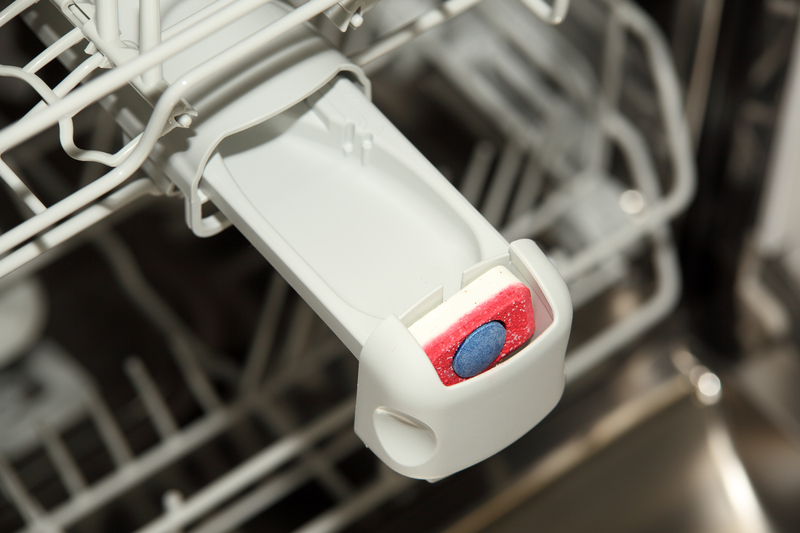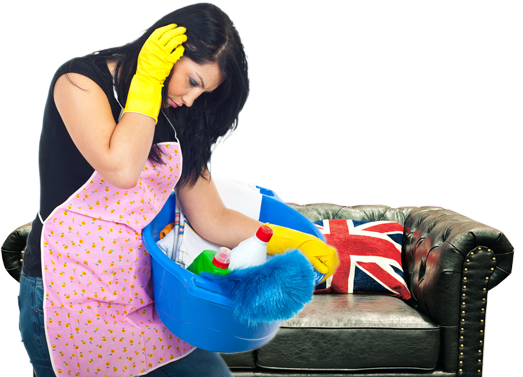Reclaim Your Stovetop's Shine by Tackling Burnt-on Residue
Posted on 08/09/2025
Reclaim Your Stovetop's Shine by Tackling Burnt-on Residue
Have you glanced at your stovetop lately and noticed stubborn, burnt-on residue that just won't budge? Whether you're a cooking aficionado or a casual home chef, maintaining a sparkling, residue-free stovetop is essential for both hygiene and aesthetics. In this comprehensive guide, we'll explore proven techniques, effective products, and homemade solutions that will help you restore your stovetop's shine by tackling burnt-on residue once and for all.

Understanding Burnt-on Stovetop Residue
Before jumping into cleaning methods, let's first understand why residue gets so stubborn and how it affects your cooking space. Burnt-on residue forms when food, grease, and sauces spill over and are left to cook repeatedly on heat. Over time, these deposits carbonize and harden, making them tough to remove with conventional wipes or sprays.
- Can dull the finish of your stovetop
- May harbor bacteria and odors
- Can affect the efficiency of burners
- Lowers the appeal of your kitchen
To reclaim your stovetop's shine and keep your cooking area in tip-top condition, regular and thorough cleaning is key. Let's move on to the best ways to deal with stubborn, burnt-on residue.
Essential Tools and Products for Stovetop Cleaning
Gathering the right tools and cleaning agents makes tackling burnt-on messes much easier. Here's a shortlist:
- Soft scrubbing pads or microfiber cloths
- Non-abrasive sponges
- Baking soda and white vinegar
- Commercial stovetop cleaners (specifically for glass, ceramic, or stainless steel)
- Plastic or silicone scrapers
- Paper towels or dry, clean rags
- An old soft toothbrush
Avoid using steel wool or harsh scouring pads, as they can scratch and damage your stovetop's surface, especially if it's made of glass or ceramic.
Step-by-Step Guide to Remove Burnt-on Residue from Your Stovetop
Follow these expert-approved steps to reclaim your stovetop's original shine:
Step 1: Preparation is Key
- Ensure the stovetop is off and cool to touch before beginning.
- Remove burners, grates, and any removable parts.
- Wipe away any loose crumbs or debris with a dry cloth.
Step 2: Apply a Baking Soda Paste
- Mix two parts baking soda with one part water to form a spreadable paste.
- Apply a generous layer over burnt-on areas. The baking soda acts as a gentle abrasive and lifts the grime.
- Let it sit for 10-15 minutes for stubborn, hardened stains.
Step 3: Scrub Gently with the Right Tools
- Using a soft sponge, microfiber cloth, or a plastic scraper, carefully scrub in a circular motion.
- For grooves and tight spots, use an old toothbrush.
- Reapply baking soda paste if needed for areas that require extra attention.
Step 4: Harness the Power of Vinegar
- Lightly spritz white vinegar over the treated area. The reaction between baking soda and vinegar helps to break down remaining residue.
- Wipe clean with a microfiber cloth, removing all paste and loosened grime.
Step 5: Rinse and Polish
- Dampen a clean rag with water and wipe down the entire surface, ensuring no baking soda or vinegar remains.
- Use a dry, soft towel to buff the surface until it gleams.
- Replace burners and grates once dry and finish with a final polish for a showroom shine.
Cleaning Different Types of Stovetops
Not all stovetops are created equal. Your cleaning approach must consider the material and finish of your appliance. Let's look at the best techniques tailored for each kind:
Glass or Ceramic Stovetops
- Never use abrasive cleaners or steel wool as they can easily scratch the surface.
- Invest in a dedicated ceramic/glass stovetop cleaner for regular maintenance.
- For major spills, use a ceramic cooktop scraper at a 45-degree angle to gently remove residue.
- Follow up with a microfiber cloth and glass cleaner for a streak-free shine.
Stainless Steel Stovetops
- Always scrub with the grain to avoid surface marks.
- Baking soda paste works very well here. For added shine, wipe down with a bit of olive oil or commercial stainless steel polish.
- Avoid chlorine or bleach-based products that can discolor the steel.
Enamel-Coated Stovetops
- While more durable, be cautious of chipping during scraping.
- Mild dish soap, warm water, and baking soda are typically safe and effective.
Gas Stove Burners & Grates
- Soak removable parts in hot, soapy water.
- For severe buildup, create a vinegar soak or lightly scrub with a scouring pad (only on grates, not the main surface).
- Let parts dry completely before re-installing.
Homemade and Eco-Friendly Cleaning Solutions
If you prefer natural cleaning products, reclaim your stovetop's shine with simple, eco-friendly formulas:
- White vinegar and lemon juice: Cuts through grease and releases burnt-on residue. Use half vinegar, half water in a spray bottle. Optional: Add a few drops of lemon juice for scent.
- Baking soda and hydrogen peroxide: Creates fizzing action that lifts stains, especially on white or light-colored stovetops.
- Cream of tartar paste: Mix with a little water for a gentle, natural scrubbing compound.
- Steam cleaning using a damp hot cloth: Place over tough spots to loosen residue with heat, then wipe clean.
Pro Tips to Prevent Burnt-on Residue
The best way to keep your stovetop sparkling is consistency. Avoid heavy-duty cleanings by practicing these habits:
- Wipe up spills promptly--the sooner you clean, the easier it is to avoid buildup.
- Cover pots and pans to minimize splatters.
- Use drip trays to catch unexpected overflows.
- Incorporate a quick daily wipe-down into your kitchen routine.
- Dedicate a deep clean once a week to stay ahead of tough stains.
Frequently Asked Questions About Burnt-on Stovetop Residue
Can burnt-on residue damage my stovetop permanently?
Severe, long-term buildup can result in irreversible damage such as staining, scratching, or corrosion. Regular cleaning is crucial to prolong your stovetop's life.
Is it safe to use razor blades for removal?
Razor blades should only be used on glass or ceramic stovetops, held at a low angle and used with extreme caution. Check your appliance manual first.
What about specialty cleaners?
There are effective commercial cleaners designed for specific stovetop materials. Always select one compatible with your appliance, and follow label instructions strictly.
How can I avoid harsh chemical fumes?
Opt for natural cleaners like baking soda, vinegar, and lemon juice. These are safe, affordable, and free from harmful fumes.

Benefits of a Clean, Shiny Stovetop
By making the effort to tackle burnt-on residue and maintain a spotless stovetop, you enjoy:
- Enhanced kitchen hygiene and reduction of germs
- Improved aesthetics and kitchen appeal
- Better cooking performance with even heating
- Longer lifespan for stoves and components
- A sense of pride and comfort in your home
Final Thoughts: Embrace a Gleaming Stovetop
Reclaim your stovetop's shine by consistently dealing with burnt-on residue, using the right methods and preventative care. With a bit of know-how and regular effort, you'll enjoy a brighter, cleaner kitchen--and every meal will start in a space you're proud of.
Ready for action? Gather your supplies, set aside a little time, and transform your cooking space by reclaiming your stovetop's shine today. Your efforts will lead to a healthier, happier kitchen--and the satisfaction of a job well done!




